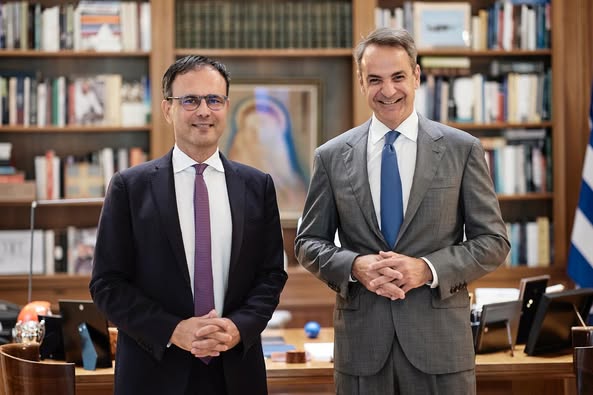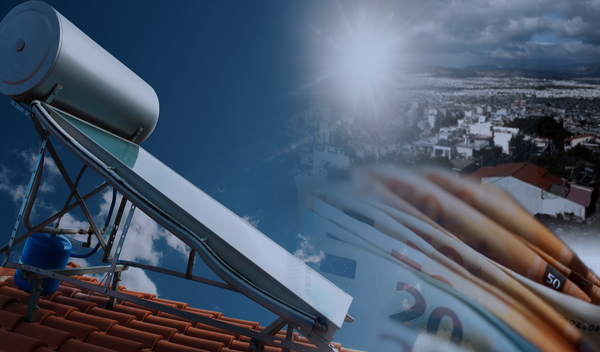
The Süddeutsche Zeitung is sporting an ambiguous title: “Athens is waking up” – from hibernation? Or is “Athens waking up” and returning as a tourist destination?
According to the Deutsche Welle article, the tour begins in Omonia and Christiane Schletzer, a longtime correspondent for the German newspaper in Greece, writes: refugees, drugs, prostitutes. Tourists were told not to approach Omonia, the lair of lawlessness. And yet today this square, in which six central avenues converge from all directions, defining the starting point for measuring all kilometers, the Greek point-zero we say, acquires a new glow with a fountain that has 200 beams of water, while the central jet launches water to a height of 20 meters “.
Then the correspondent of the Süddeutsche Zeitung presents the initiative of an Athenian, George Kagas, to organize tours with the cooperation of volunteers and with the help of the website “This is Athens”. Finally, there is some historical background: “The rule of the Bavarians lasted from 1832 to 1862 and was not very popular with the Greeks. But its influence on the image of the Athenian center remains evident to this day. Architects such as Leo von Klenze and Friedrich von Gerdner from Munich left behind, among others, the Parliament building, the old Palace. The anniversary exhibition for the 200 years (since the Greek revolution) reminds us of this at the Benaki Museum, on Piraeus Street. The first photographs of the Acropolis around 1870 are impressive, with the Parthenon dominating in the middle of ruins. Klenze insisted on saving the ancient heritage, while his rival Karl Friedrich Schenkel, from Prussia, wanted to build the Royal Palace on the Acropolis. Fortunately, Klenze’s opinion prevailed “
Latest News

Capital Link Forum Highlights Greece’s Economic Resurgence; Honors BoG Gov Stournaras
Capital Link Hellenic Leadership Award recipient, Bank of Greece Gov. Yannis Stournaras, an ex-FinMin, was lauded for his pivotal role during Greece’s economic recovery

Tourist Spending in Greece Up by 14%, Visa Card Analysis Shows
Greece’s capital Athens emerged as the most popular destination, recording a 17% increase in transactions with Visa cards, surpassing even the cosmopolitan island of Mykonos.

Inflation in Greece Unchanged at 2.4% in Nov. 2024
The general consumer price index (CPI) posted a 0.4% decrease in November compared to the previous month

2024 Christmas Holidays: Extended Shop Hours Schedule
The 2024 Christmas Holidays extended shop hours schedule commences on Thursday, December 12 and runs until the end of the year.

ELSTAT: Seasonally Adjusted Unemployment Down in October
The number of employed individuals reached 4,284,694, an increase of 67,723 compared to October 2023 (+1.6%) and 22,002 compared to September 2024 (+0.5%).

Greek PM’s Chief Economic Adviser Resigns
In the post on his Facebook page, Patelis did not disclose the reasons that led him to step down.

“Masdar Invests in the people of Greece and in the vision of TERNA ENERGY”
Four messages from the CEO of Masdar, the Arab renewable energy giant, after its acquisition of 70% of TERNA ENERGY

Lloyd’s List Greek Shipping Awards 2024: Honors for leading companies and personalities in the Greek shipping sector
20 awards presented at the 21st annual Lloyd's List Greek Shipping Awards

Syria’s Bashar al-Assad, His family Granted Asylum by Russia
Reuters also reported that a deal has been struck to ensure the safety of Russian military bases in the war-ravaged country

Greece to Introduce Artificial Intelligence into Its Education System
Currently, Greece is taking its first steps to bring AI into classrooms through the AI4edu program, which is being co-funded by the European Union















![Χειμερινή εξοχική κατοικία: Οι Ελληνες γυρνούν την πλάτη παρά την πτώση των τιμών [γραφήματα]](https://www.ot.gr/wp-content/uploads/2024/12/Capture-19-90x90.jpg)










![Εμπορικά ακίνητα: Ασταμάτητη η άνοδος των ενοικίων – Πόσο αυξήθηκαν σε Αθήνα, Θεσ/νίκη και υπόλοιπη Ελλάδα [πίνακες]](https://www.ot.gr/wp-content/uploads/2021/05/grafeip-600x399.jpg)














 Αριθμός Πιστοποίησης Μ.Η.Τ.232433
Αριθμός Πιστοποίησης Μ.Η.Τ.232433